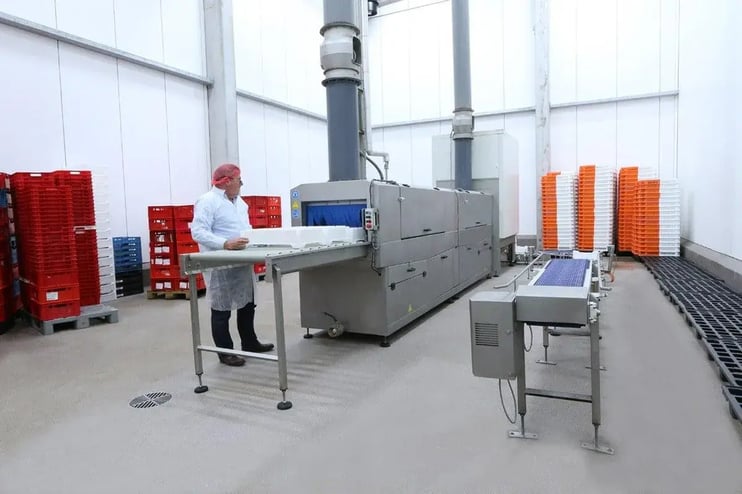Six factors of a crate washer contributing to efficient and sustainable usage

The investment in a crate washer is justified because using it provides many advantages. As well as saving work and time, the sustainable aspect of a washer also plays a significant role. In this blog, we set out a series of which factors of the crate washer contribute to efficient usage of water, energy and cleaning agent.
1. Recirculation of the washing water in crate washer
The washing water in Elpress crate washers is continuously filtered so that it can also be re-used again. Of course, this also provides an enormous saving in water consumption. For stepwise usage of regenerated water, a cascade process is used. In this way, the fresh re-rinsing water of the re-rinsing section can be reused in the pre-wash and main wash section.
2. Smart usage of energy sources
If a lot of heat is released into your business process, it is a shame for this to be carried away ‘unused’. By providing the crate washer with a heat exchanger, the residual heat otherwise coming from the business process can be used to heat the washing water of the crate washer.
3. Stand-by function
At the time that no crates are going through the crate washer – but it is on – it is shame to consume unnecessary water and energy. That is why the crate washer is provided with a stand-by function. This is activated by a sensor in the rinsing arch. Whenever this sensor does not detect any crates for a given time, the rinsing arch is shut off and the washer pumps go into stand-by. As soon as the crates go back into the washer, the process is automatically restarted immediately. You can set the time yourself before the washer goes into stand-by. Of course, what is true here is that the shorter this time is, the less water and energy is wasted.
4. Insulated exterior walls of a crate washer
The exterior walls and the water tanks of a crate washer can optionally be insulated. This means less heat is lost by radiation. By keeping the heat in the system better, less energy is needed. If the crate washer is provided with steam suction then during this process, heat is also recovered. This provides a reasonable reduction in energy losses.
5. Frequency regulator
The crates are transported by means of a chain conveyor through the crate washer. This speed of this chain can be set with a frequency regulator (this is optional). For crates that are only slightly soiled, the speed of the chain conveyor can be increased by the crates going through the washing process more quickly and so less energy is needed for each crate.
6. Hygienic design
The crate washer itself also needs to be kept clean, of course. This was taken into account when designing the washer. By using hygienic stainless steel and a ‘sloping’ design – so that no water remains on the washer – the machine can be cleaned quickly and efficiently. This means that less water, energy and cleaning agent are needed.
More Information about the industrial washing systems?
Would you like to know more about the Elpress industrial washing systems? Then feel free to contact us – there’s no obligation. Our specialists would be pleased to advise you!
.webp)




.jpg?width=600&height=300&name=eCIS-(4).jpg)
.jpg?width=600&height=300&name=eCIS-(2).jpg)